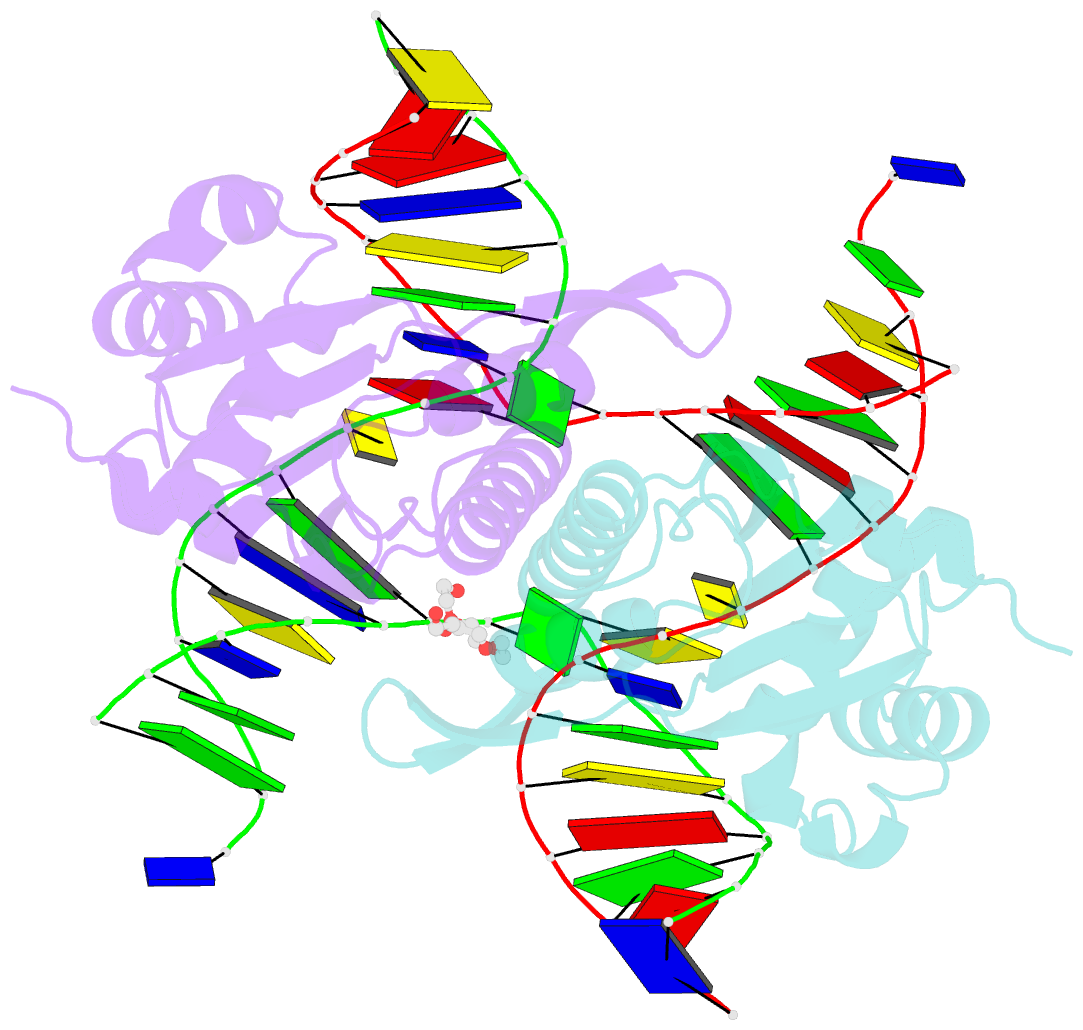Summary information and primary citation
- PDB-id
- 6jrf; SNAP-derived features in text and JSON formats;
DNAproDB
- Class
- DNA binding protein-DNA
- Method
- X-ray (2.047 Å)
- Summary
- Crystal structure of zmmoc1-holliday junction complex in the presence of calcium
- Reference
- Lin H, Zhang D, Zuo K, Yuan C, Li J, Huang M, Lin Z (2019): "Structural basis of sequence-specific Holliday junction cleavage by MOC1." Nat.Chem.Biol., 15, 1241-1248. doi: 10.1038/s41589-019-0377-4.
- Abstract
- The Holliday junction (HJ) is a key intermediate during homologous recombination and DNA double-strand break repair. Timely HJ resolution by resolvases is critical for maintaining genome stability. The mechanisms underlying sequence-specific substrate recognition and cleavage by resolvases remain elusive. The monokaryotic chloroplast 1 protein (MOC1) specifically cleaves four-way DNA junctions in a sequence-specific manner. Here, we report the crystal structures of MOC1 from Zea mays, alone or bound to HJ DNA. MOC1 uses a unique β-hairpin to embrace the DNA junction. A base-recognition motif specifically interacts with the junction center, inducing base flipping and pseudobase-pair formation at the strand-exchanging points. Structures of MOC1 bound to HJ and different metal ions support a two-metal ion catalysis mechanism. Further molecular dynamics simulations and biochemical analyses reveal a communication between specific substrate recognition and metal ion-dependent catalysis. Our study thus provides a mechanism for how a resolvase turns substrate specificity into catalytic efficiency.





